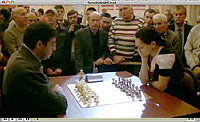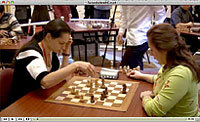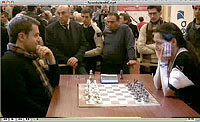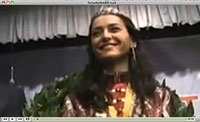What's biology got to do with chess?
Chess blog for latest chess news and chess trivia (c) Alexandra Kosteniuk, 2011
Hi everyone
Here is an interesting use of the chess motif. What's biology got to do with chess?
Emory evolutionary biologist Jaap de Roode has had some strange assignments in his academic career. In his early days as a researcher, for example, his job was to measure the penis size of Malaysian dung beetles. So it was no big deal when a photographer for Popular Science magazine asked de Roode to pose at a chessboard, pretending to watch two opponents: A butterfly and a bio-hazard bottle that was standing in for a parasite. The photo shoot was to illustrate the Popular Science “Brilliant 10,”top scientists under 40 from across the nation recognized by the editors of the magazine.
De Roode was declared “Brilliant” for his discovery of how monarch butterflies treat themselves and their offspring for parasites, using medicinal plants.
“I liked the concept of the chess game,” says de Roode. “That really is how scientists view the co-evolutionary process of a host and its parasites. One makes a move, and the other responds with a defense or attack.” Read further about the concept here.
Hi everyone
Here is an interesting use of the chess motif. What's biology got to do with chess?
Emory evolutionary biologist Jaap de Roode has had some strange assignments in his academic career. In his early days as a researcher, for example, his job was to measure the penis size of Malaysian dung beetles. So it was no big deal when a photographer for Popular Science magazine asked de Roode to pose at a chessboard, pretending to watch two opponents: A butterfly and a bio-hazard bottle that was standing in for a parasite. The photo shoot was to illustrate the Popular Science “Brilliant 10,”top scientists under 40 from across the nation recognized by the editors of the magazine.
De Roode was declared “Brilliant” for his discovery of how monarch butterflies treat themselves and their offspring for parasites, using medicinal plants.
“I liked the concept of the chess game,” says de Roode. “That really is how scientists view the co-evolutionary process of a host and its parasites. One makes a move, and the other responds with a defense or attack.” Read further about the concept here.
From Alexandra Kosteniuk's
Also see her personal blog at
Labels: chess and biology, giant butterflies and chess, Jaap de Roode, Popular Science



































0 Comments:
Post a Comment
Note: Only a member of this blog may post a comment.
Subscribe to Post Comments [Atom]
<< Home